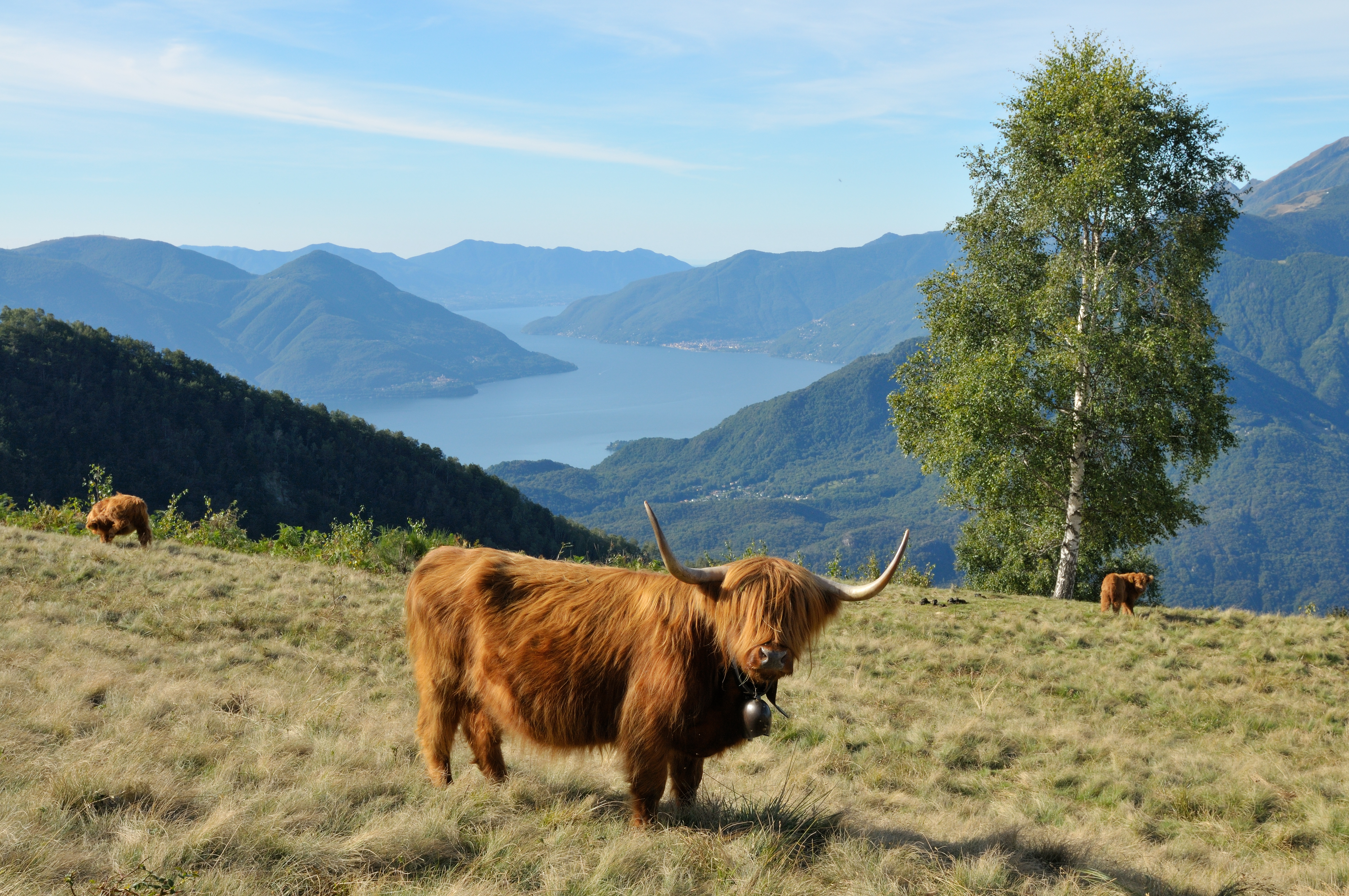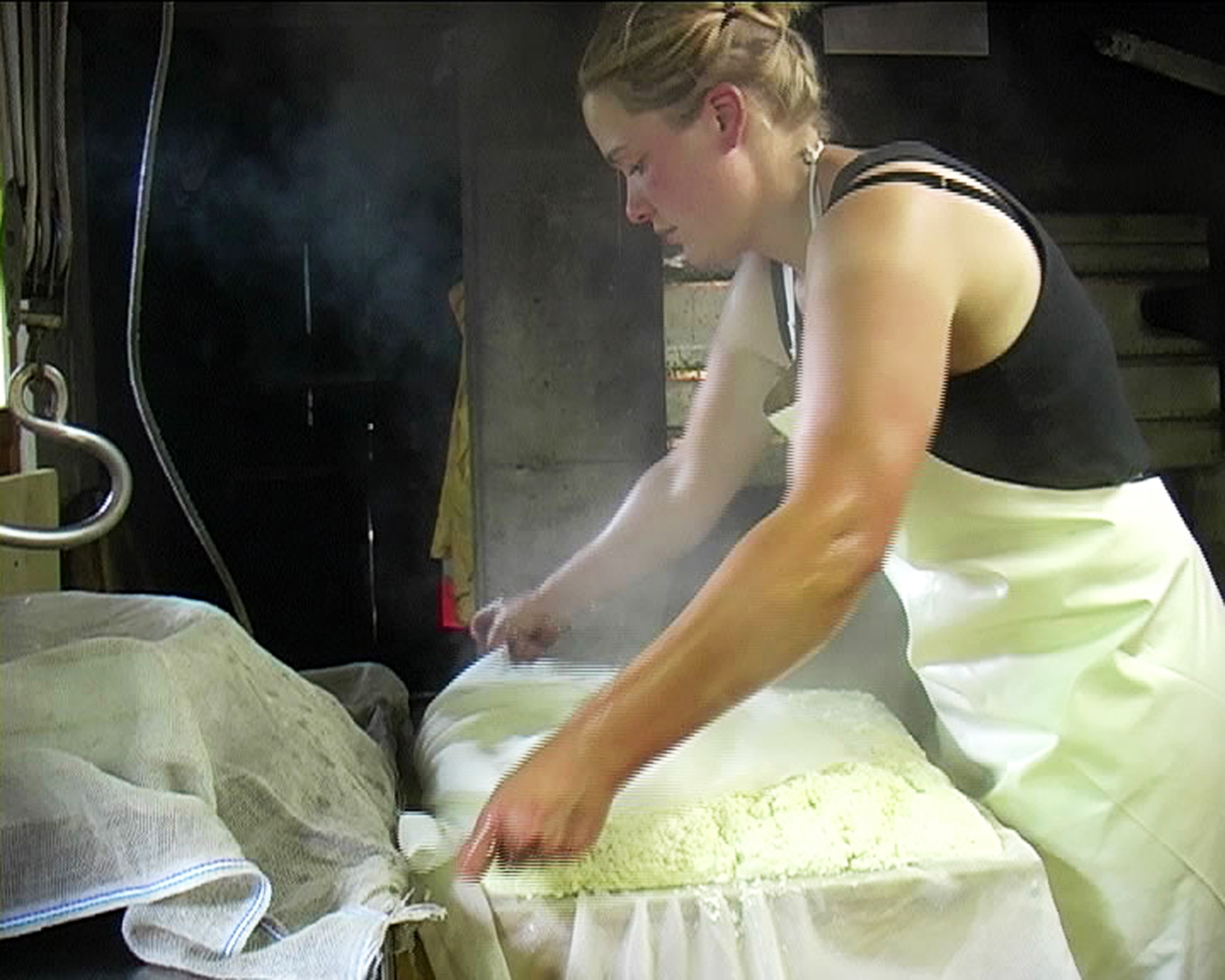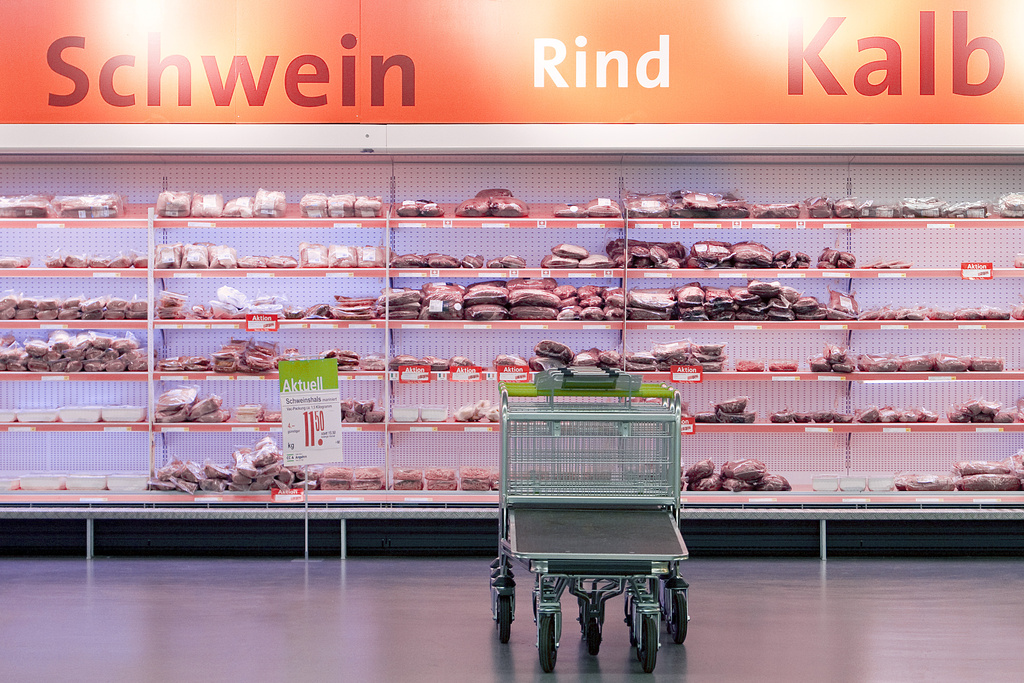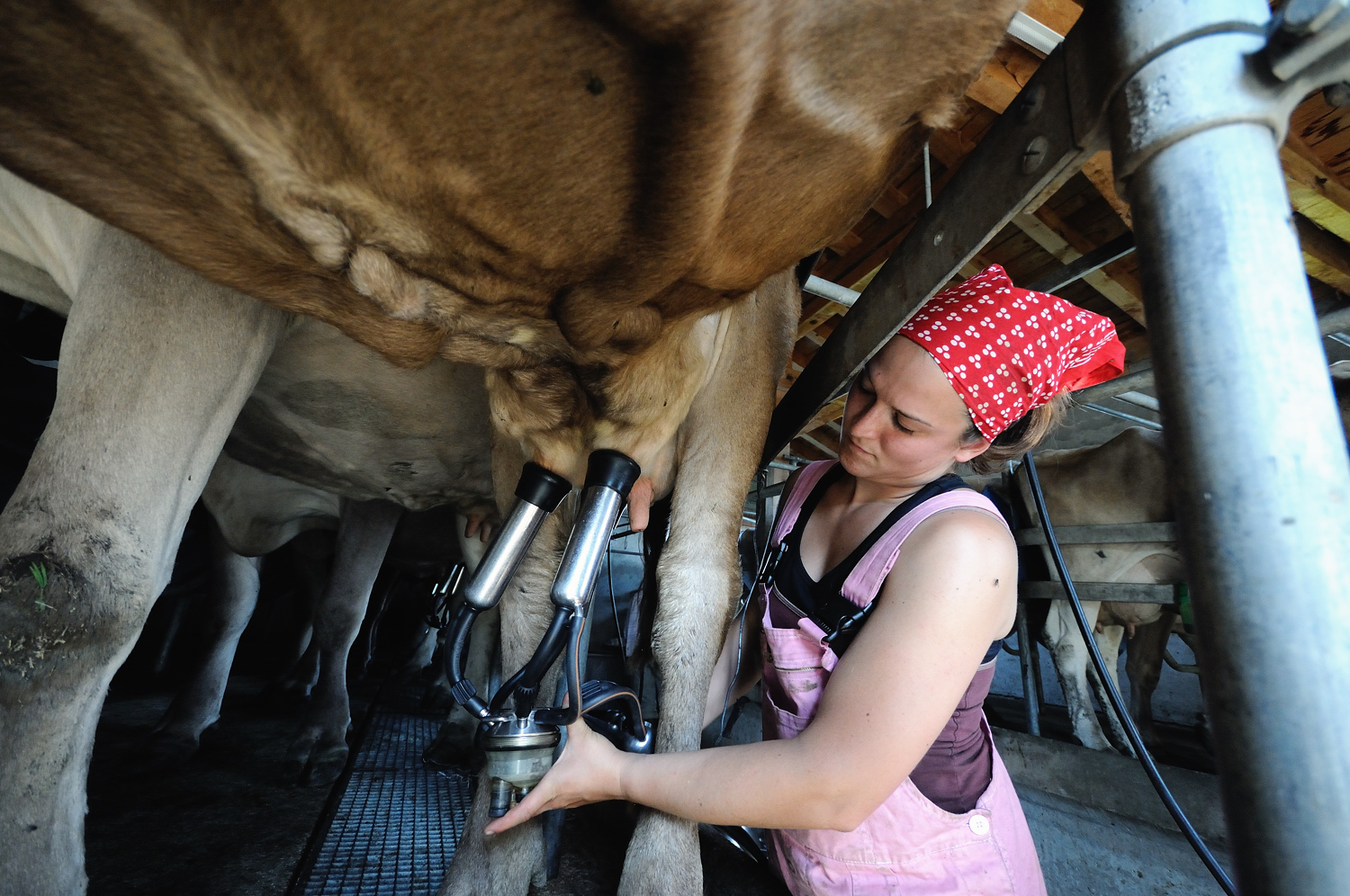The financial share that chews the cud

Guido Leutenegger keeps 500 Scottish Highland cattle in the southern canton of Ticino and anyone can invest in his business.
The “cow shares” are called Lotti, and the dividend payout is unusual to say the least. The shareholders receive meat.
The shaggy, red-brown cattle with their long horns appear so friendly and the calves look particularly cute. Leutenegger says he fell in love with the Scottish Highland breed.
It all started in the middle of the 1990s with two cows and one bull. He now has 500 animals.
“And 20 more are coming directly from Scotland to provide new blood,” he told swissinfo.ch.
His cattle are pastured on eight alpine meadows in northern Ticino.
In this part of Switzerland, people are used to seeing Scottish Highland cattle because in lower lying areas and in the valleys they remain outside even in winter.
Leutenegger, a former primary school teacher from Kreuzlingen at the northeastern tip of Switzerland, had the idea of saving neglected alpine meadows by using them to pasture the highland breed, which need very little care.
Alpine meadows
He wrote to communes of Ticino to ask to lease the alpine pastures. The answers he received were consistently positive.
He set up his “operational centre” and a stable in Coglio in the Maggiatal. In fact he only needs the stable for emergencies like illnesses, because the animals are always in the meadow.
His pick-up trucks still have the Thurgau registration plate of his home canton, showing that he commutes back and forth between there and his new home in Ticino. In Thurgau he still leases a 25 hectare farm. But he is real home is now in the Maggiatal.
What is unusual about Leutenegger’s operation Natur Konkret (Practical Nature) is that half the cows, around 250, belong to private investors. The idea of a “cow share” came to the innovative farmer four years ago when he asked a banker friend for redit.
When the banker wanted some kind of security, the farmer offered his cows but the banker didn’t find this enough.
“Cow share”
But what the bank was not happy with did fascinate individuals. Leutenegger invented the “cow share”. You pay SFr2,500 ($3,000) and get a certificate saying you own it for the next ten years.
“There’s a share called Lotti on the meadow,” jokes Leutenegger.
The dividends are paid out in kind: meat, sausage and cheese to a value of SFr350 per year, which is delivered by post. In ten years that means dividends worth SFr3,500 – a profit of SFr1,000 on the initial investment. The product is organic because the cattle feed on water, grass and hay.
Leutenegger advertises with the slogan “Organic meat from southern Switzerland.” Usually only male animals are slaughtered at selected butchers in canton Graubünden. It’s there that the meat is vacuum packed and then sent by post.
At first he advertised in the alternative press and with nature associations. But there wasn’t much response. “Too many vegetarians,” laughs Leutenegger. Then he went into the business sections of newspapers and demand exploded.
Sustainable investment
During the financial crisis, he promoted his cows as sustainable investment.
“I was myself astounded over the success of the share – including from people who work in finance,” Leutenegger says. It’s clear a certificate for a Scottish Highland cow has an attraction than a normal share doesn’t have.
There are lots of alpine meadows available in the summer. The main problem is to find enough land in lower-lying areas for the animals to overwinter because the Scottish Highland cattle remain outside all year long.
Passers-by and hikers kept coming across them in winter. Some even called in the cantonal vet to report what they thought was cruelty to animals.
But a field study by the Department of Farm Animals of Zurich University has proved scientifically that Highland Cattle are quite happy to be outside all winter long.
Scientific proof
Not surprisingly, Leutenegger was very pleased with the outcome of the study. But it’s not enough for him. He also wants scientific proof that that the low-fat meat he produces is of high quality. “Subjectively we are convinced, but we want an official document, he said.” That’s why the Agroscope Research Institute was commissioned to carry out a study.
Consumers certainly enjoy the meat, even though it costs SFr35 more per kilo than normal beef. About half is sent to those who have shares, the remainder goes to individual customers who include a luxury hotel in Ascona.
The whole operational concept of “Natur Konkret”, an enterprise which now employs 14 people in summer, is becoming more widely known.
Last year, Leutenegger received the readers’ prize for his “Share named Lotti” as part of the Agro Prize 2010 organised by the magazines Swiss Farmers and Land & Nature to reward innovation in farming.
In Switzerland there are about 250 livestock owners of Scottish Highland Cattle.
The number of animals is estimated at 8,000. They have become ever popular since the early 1990s and they live mainly in cantons Ticino, Zürich and Graubünden.
The owners are organised in the Highland Cattle Society, which was formed in 1995 in Bassin, canton Vaud.
The aim of the society is to maintain pure breeding and support breeding methods
.
They organise events to promote sales, exchange their views and promote further education. The President of the Highland Cattle Society is Guido Leutenegger.
Highland cattle or kyloe are an ancient Scottish breed of beef cattle with long horns and long wavy coats which are coloured black, brindled, red, yellow or dun.
Highlands are known as a hardy breed due to the rugged nature of their native Scottish Highlands, with high rainfall and strong winds.
Highland cattle have been successfully established in many temperate countries and indeed in countries where winters are substantially colder than Scotland’s such as central Europe and Canada.
Their hair provides protection during the cold winters and their skill in browsing for food enables them to survive in steep mountain areas. They both graze and browse and eat plants which many other cattle avoid.
The meat tends to be leaner than most beef because Highlands get most of their insulation from their thick shaggy hair rather than subcutaneous fat.
The coat makes them a good breed for cold northern climates and they are able to thrive in outdoor conditions that would defeat most other breeds of domestic beef cattle.
(Translated from German by Robert Brookes)

In compliance with the JTI standards
More: SWI swissinfo.ch certified by the Journalism Trust Initiative



You can find an overview of ongoing debates with our journalists here. Please join us!
If you want to start a conversation about a topic raised in this article or want to report factual errors, email us at english@swissinfo.ch.